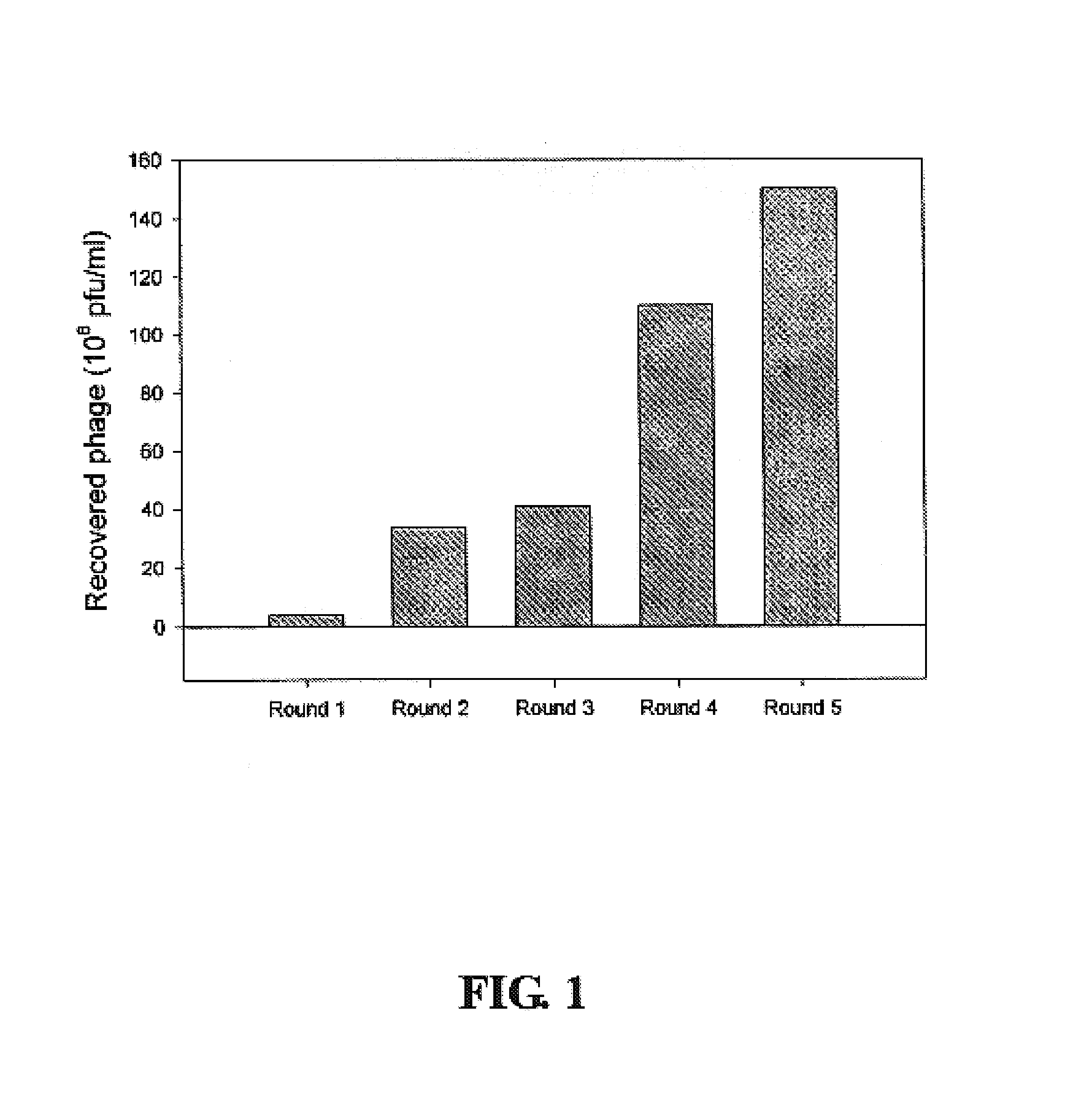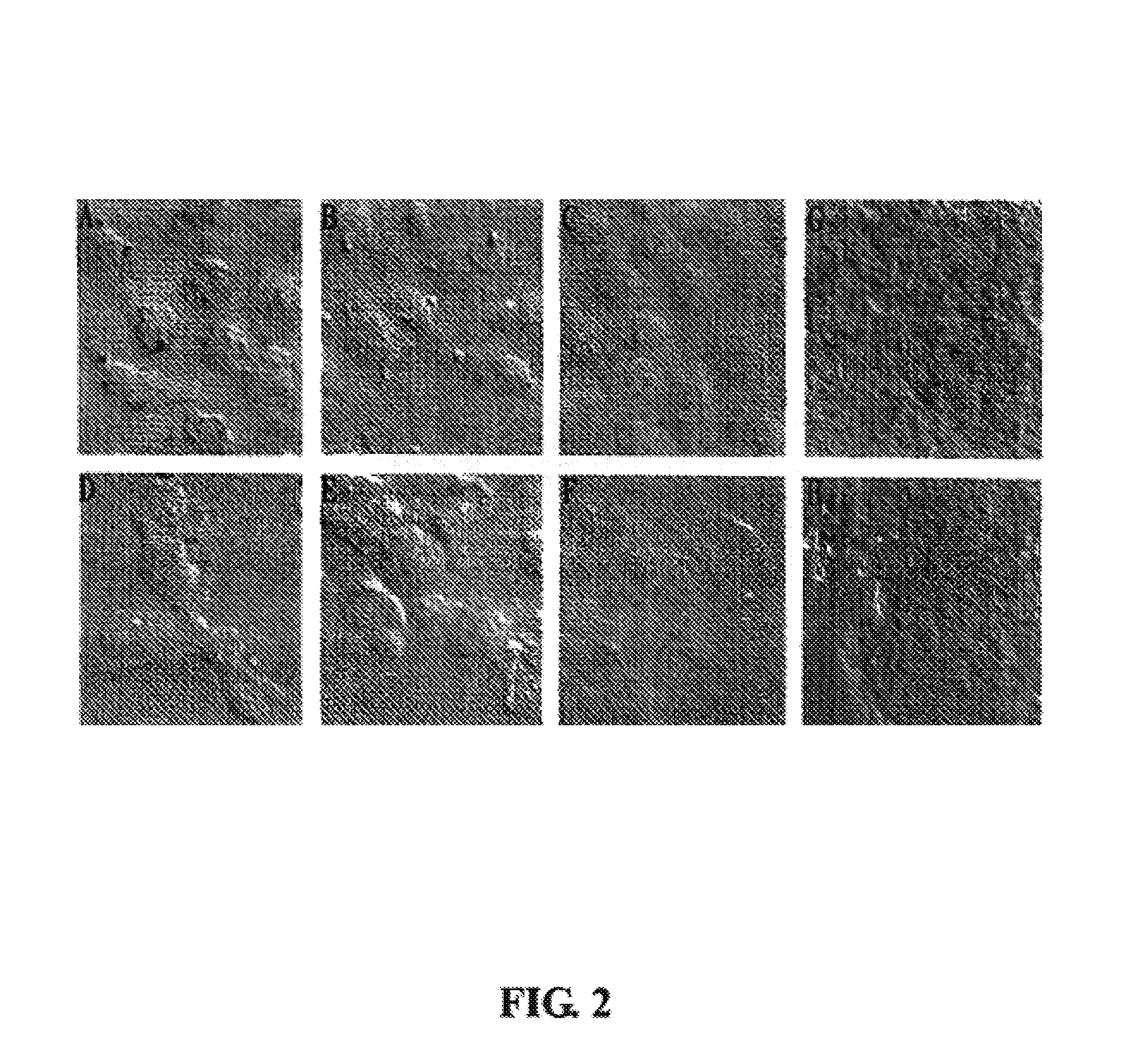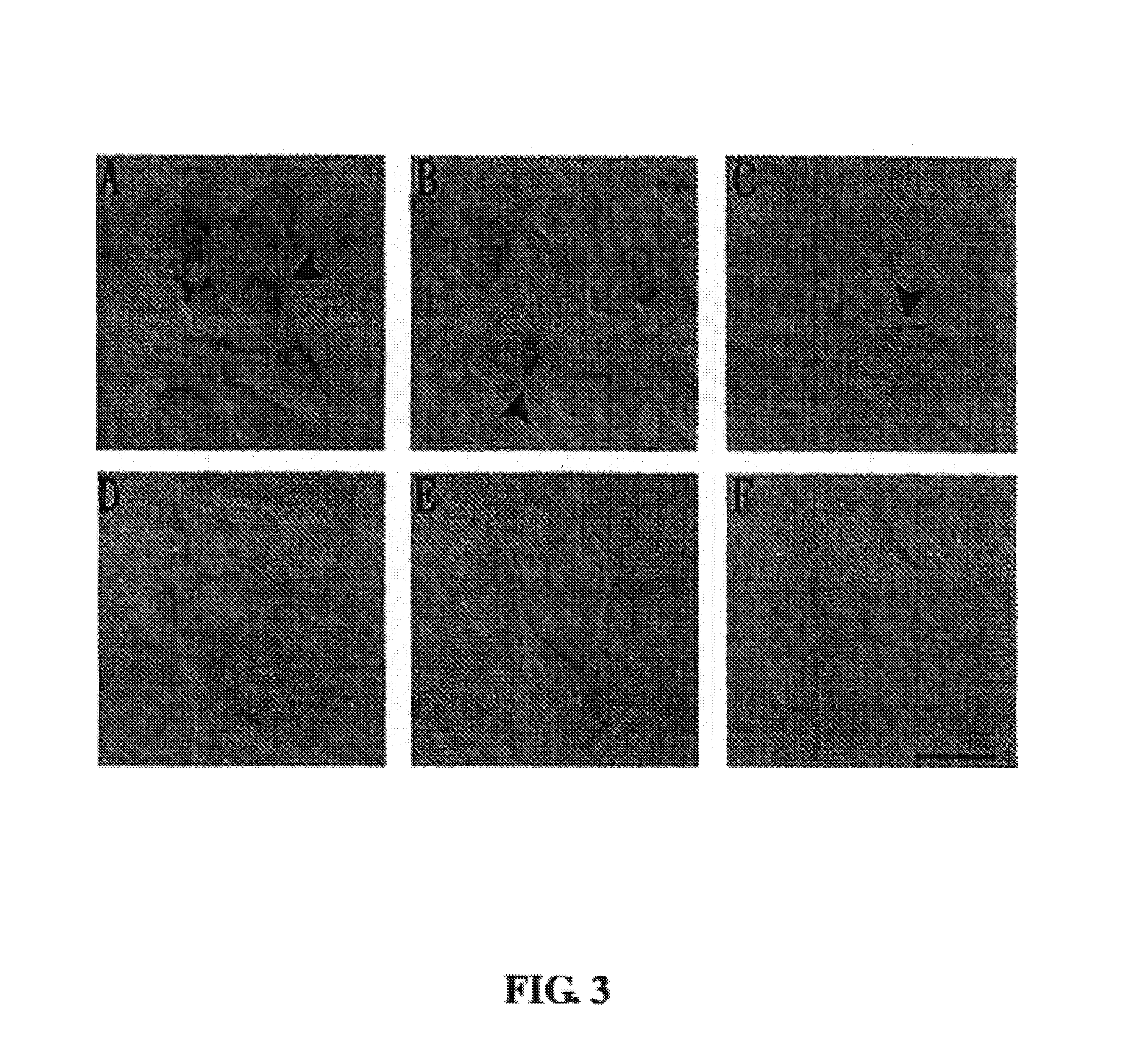Peptide marker targeting to nasopharyngeal carcinoma cell and application thereof
a nasopharyngeal carcinoma and peptide technology, applied in the field of tumor peptide markers, can solve the problems of low survival rate in advanced stage npc patients, many of chemotherapy's most severe toxic effects, and the inability to apply chemotherapeutics with high toxicities including doxorubicin in cancer therapy. and other problems, to achieve the effect of improving the efficacy of chemotherapy and reducing the dosage of drugs
- Summary
- Abstract
- Description
- Claims
- Application Information
AI Technical Summary
Benefits of technology
Problems solved by technology
Method used
Image
Examples
example 1
Biopanning of a Phage Displayed Peptide Library
[0063]The present invention is based on ex vivo screening of phage displayed peptide libraries purchased from New England BioLabs (New England BioLabs, Inc. Beverly, Mass., USA) for specific ligands. 5×106 of NPC cells (NPC-TW 04) and normal nasal mucosa cells (NNM-13) were placed on 10-cm Petri dish respectively. The culture medium was replaced with 5 ml of DMEM (Dulbecco's modified Eagle medium) containing 1% BSA before biopanning, and the Petri dishes were placed at 4° C. for 30 mins. Then 5×1012 plaque-forming units (pfu) of UV-treated inactive control phage (helper phage) were added to confluent cultures of NPC-TW 04 and NNM-13 cells separately at 4° C., followed by addition of 5×1010 pfu of M13 phage peptide library PhD-12 (New England BioLabs). The library was biopanned on NPC-TW 04 cells after subtracted with NNM-13 cells 3 times, each time lasted for 1 h at 4° C. Internalized phages were recovered by 2 ml of lysis buffer after ...
example 2
Identification of NPC Specific Phage Clones by ELISA and DNA Sequence Analysis
[0064]NPC-TW 04 cells were plated on 96-well enzyme-linked immunosorbent assay (ELISA) plates and cultivated overnight. The cells were washed twice with serum-free DMEM, and then incubated with blocking buffer (serum-free DMEM containing 1% BSA) at 37° C. for 30 mins.
[0065]Phages (109 pfu) selected from Example 1 were added to the above mentioned plates and incubated at 4° C. for 2 hrs, followed by cold PBS washes. Then the plates were incubated with 1:1000 diluted horseradish peroxidase (HRP)-conjugated anti-bacteriophage M13 antibody solution in blocking buffer at 4° C. for 1 hrs. The plates were rinsed with PBS buffer thee times and incubated with the peroxidase substrate o-phenylenediamine dihydrochloride (OPD; Sigma, Germany). The reaction was stopped with 3N HCl, and the plates were read using a microplate ELISA reader at 490 nm. Phage clones with higher binding activity to NPC cells were screened.
[0...
example 3
Binding Assay of Specific Phage Clones
[0068]All cancer cell lines, normal nasal epithelia cells and fibroblasts were plated on cover glasses and cultured to about 80% confluence. These cover slips were washed with serum-free DMEM twice and incubated in the blocking buffer containing 1011 pfu of UV-treated inactive control phage at 37° C. for 30 mins. Then they were washed with PBS twice, treated with 1% hydrogen peroxide at 4° C. for 10 mins and rinsed with cold PBS.
[0069]109˜1010 pfu of purified phage (including L-phage) were added to each cover glasses containing blocking buffer and then incubated at 4° C. for 1 hrs. After washed with cold PBS buffer for thee times, HPR-labeled mouse anti-M13 monoclonal antibody diluted 1:50 in blocking buffer was added for 1 hrs at 4° C.
[0070]The cover slips were washed with cold PBS buffer for thee times, fixed with 3% formaldehyde (prepared with phosphate buffer), rinsed with cold PBS twice, then immersed in 0.05% 3,3′-diaminobenzidine-4 HCl in...
PUM
| Property | Measurement | Unit |
|---|---|---|
| physiological temperatures | aaaaa | aaaaa |
| pH | aaaaa | aaaaa |
| concentration | aaaaa | aaaaa |
Abstract
Description
Claims
Application Information
 Login to View More
Login to View More - R&D
- Intellectual Property
- Life Sciences
- Materials
- Tech Scout
- Unparalleled Data Quality
- Higher Quality Content
- 60% Fewer Hallucinations
Browse by: Latest US Patents, China's latest patents, Technical Efficacy Thesaurus, Application Domain, Technology Topic, Popular Technical Reports.
© 2025 PatSnap. All rights reserved.Legal|Privacy policy|Modern Slavery Act Transparency Statement|Sitemap|About US| Contact US: help@patsnap.com



